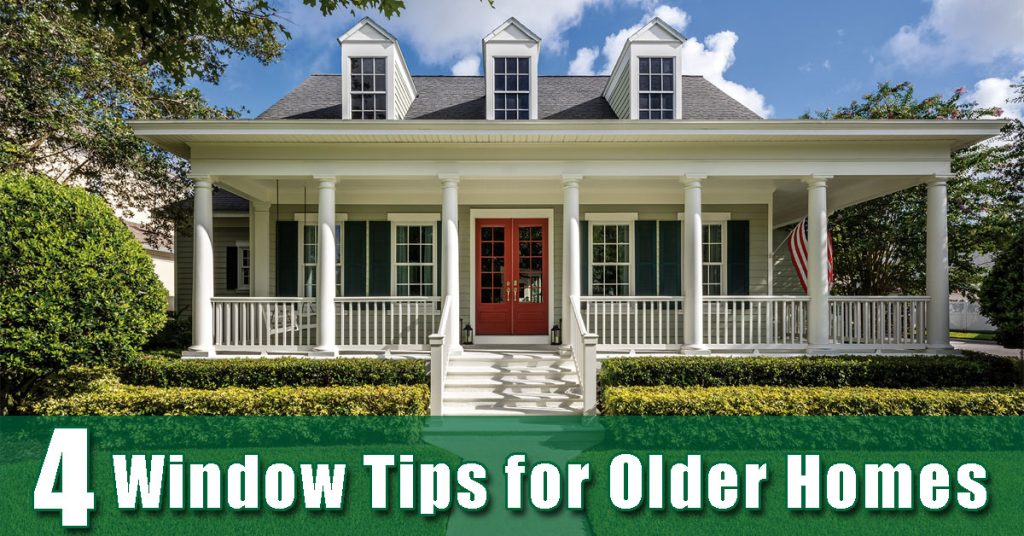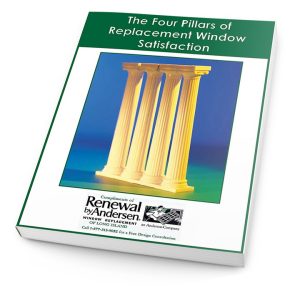MENU


Do you own or recently purchase an older home in New Jersey or New York? Thinking about updating the windows, but aren’t sure which replacement windows you should buy? Of course, “older home” is a really broad category. Older might mean your house was built 30 to 50 years ago. Or, it might be a historic home in a preservation district. Many people equate condition with age, which isn’t always a valid measurement. At Renewal by Andersen of New Jersey and New York Metro, we advise homeowners to think beyond age and consider context when deciding which styles and features are the best fit for their home.
Deciding which replacement window you should buy for your home doesn’t have to be a decision made alone. Working with a window manufacturer and dealer you trust helps you make informed decisions. Over the past 25+ years working with area homeowners, we’ve learned that well-informed customers are usually more satisfied than consumers feel pressured to buy certain styles or add certain accessories to get the best price. We put together these four tips to get you started on the journey toward updating your older home.
We know that the best replacement window is the one that meets your needs. Setting realistic goals helps ensure you’ll be satisfied with the outcome after the installation crew has tidied up and left you to start enjoying your brand new windows. Here are a couple of examples that show you how to fine-tune your wish list.
By creating realistic expectations, you’ll be better prepared when the time comes to design your home windows. All homes built before the 1930s were appointed with single-pane windows. Owning an eighty- or ninety-year old home with original windows means that you’ll definitely want to choose a double-pane window. Even if you are renovating a historic home, unless you are bound by a grant provision or other regulation to maintain exact replicas, choose insulated windows with two panes and gas between the glass, or prepare to spend way more than you have to one heating and air conditioning bills.
Some brick homes built in the 1940s and 1950s have recessed windows. In many of these homes the trim and frame are painted the same color as the exterior finish – making them almost fade into the background. To maintain the original aesthetic, you’ll want to replace your windows with a style that has a comparable frame width. You can choose a different window style if you want to accentuate your windows. For example, you might replace sliding windows with a double-hung or casement window. Download the Renewal by Andersen app to see how different styles affect the overall appearance of your home. By defining your vision, you help your window consultant guide you toward specific styles, grille patterns, glass types and color choices. Of course, the final decision is always yours.
Older homes with aging windows may also have outdated heating and air conditioning systems. Antiquated systems often required a window be opened to allow gas fumes or excess moisture to escape. Modern systems are designed to self-vent and recirculate indoor air. Windows play an integral part in maintaining healthy indoor air quality and temperature. When deciding what ratio of inoperable and operable windows to have in an older home, always consider the overall condition of your home, the age and performance of your heating and air conditioning systems and other factors that may contribute to high indoor humidity levels.
Updating an older New Jersey or New York home with modern, energy-efficient replacement windows is a unique journey that should be approached with intentional planning. Fortunately, the Renewal by Andersen of New Jersey and New York Metro replacement window team has experience helping consumers design home windows and doors to complement every architectural style. To learn more, just complete the short form on this page or give us a call at (866) 609-5033 to schedule a free, no-obligation consultation in the privacy of your own home.
Check out this post for more information on replacement windows for different home architectural styles.

Learn Everything You Need to Know BEFORE Buying Replacement Windows